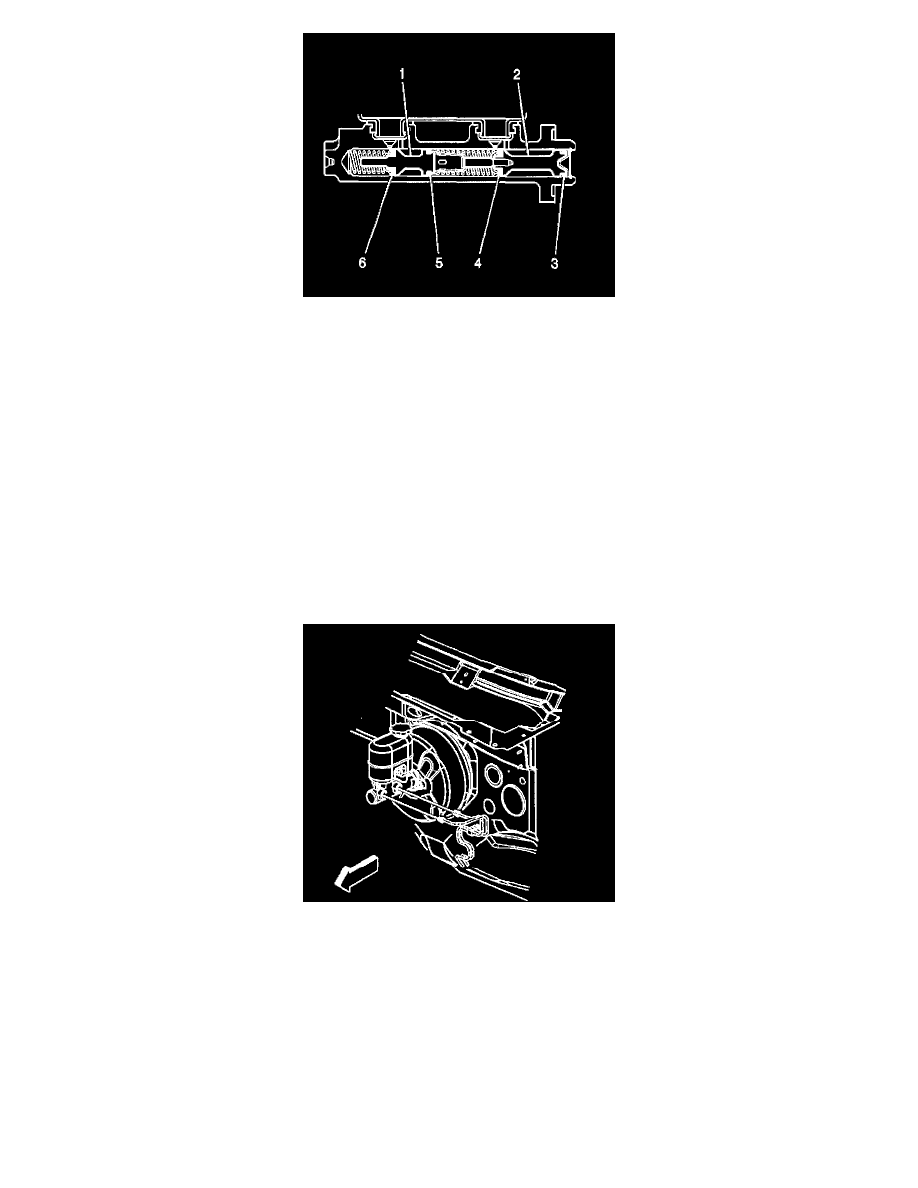C 3500 Truck 2WD V8-6.0L VIN U (2001)

1. Clean the interior and exterior of the master cylinder, the secondary piston (1), and the return spring in denatured alcohol, or equivalent.
2. Inspect the master cylinder bore, inlet and outlet ports, the secondary piston (1), and the return spring for cracks, scoring, pitting, and/or corrosion.
Replace the master cylinder if any of these conditions exist.
3. Dry the master cylinder and the individual components with non-lubricated, filtered air.
4. Lubricate the master cylinder bore, the secondary piston (1), the return spring, and all of the individual overhaul components with Delco Supreme
110 (GM P/N 12377967) or equivalent DOT-3 brake fluid from a clean, sealed brake fluid container.
5. Assemble the lubricated, new primary seal (6) and retainer, and new secondary seal (5) onto the secondary piston.
6. Install the lubricated return spring and secondary piston assembly (1) into the cylinder bore.
7. Install the lubricated, new primary piston assembly (2) into the cylinder bore.
8. Using a smooth, round-ended tool, depress the primary piston (2) and install the new piston retainer.
9. Install the master cylinder reservoir to the master cylinder.
10. Install the reservoir cap and diaphragm to the reservoir.
11. Install the master cylinder to the vehicle.
Vacuum Boost
Master Cylinder Replacement (Vacuum Boost)
Removal Procedure
1. Apply the parking brake.
2. Disconnect the electrical connection at the brake fluid level sensor.
3. Disconnect the brake pipes.
4. Plug the pipes in order to prevent brake fluid loss or contamination.
